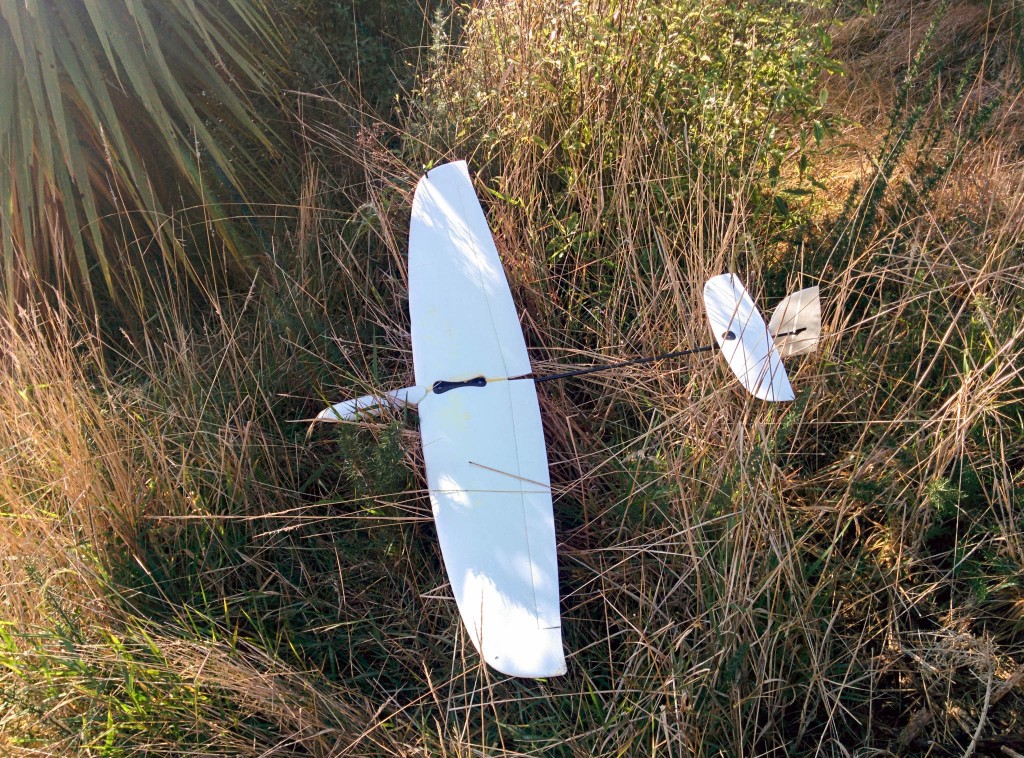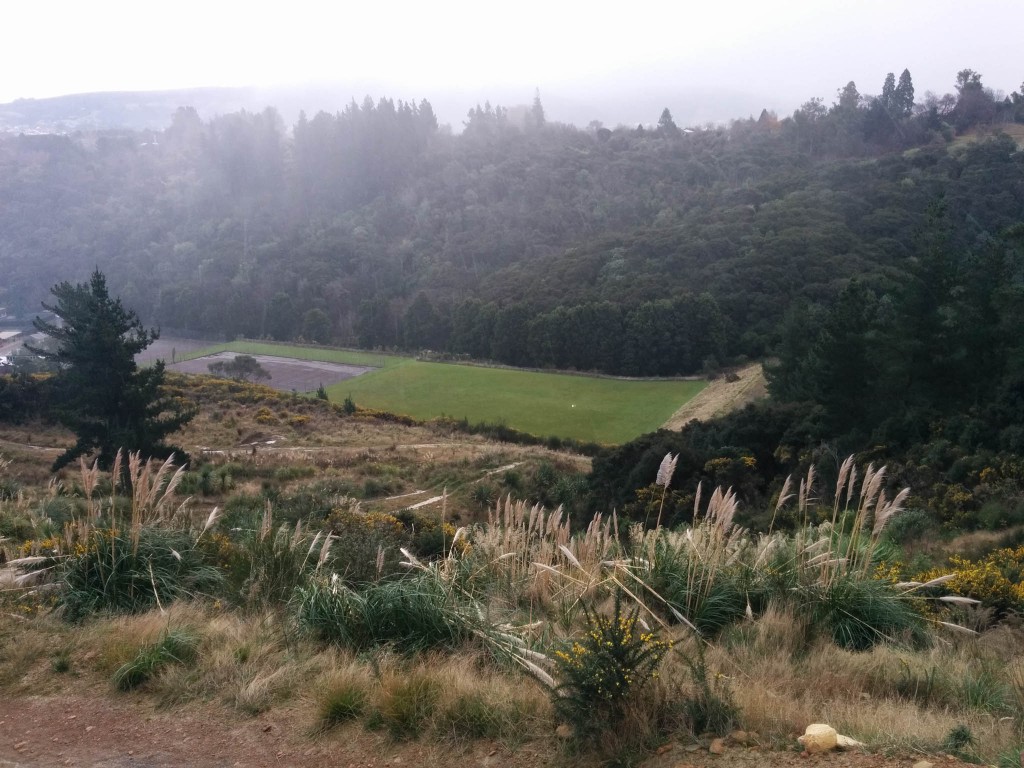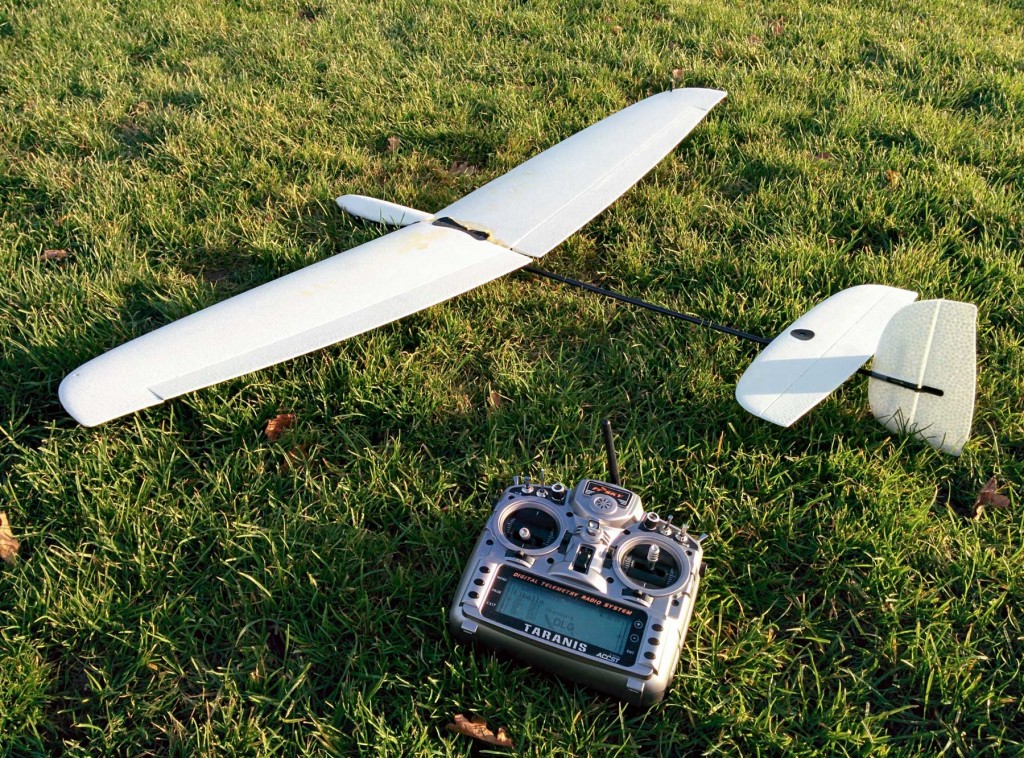 Ever since I received my Libelle, I’ve only been flying discus-launch on flat land in calm wind, but last night I saw the forecast for today was for a nice 10km/hr westerly wind and clear sunny skies. I had a hunt around on Google maps and finally found a west-facing slope. It’s a big hillside with a series of switchbacks and jumps carved into it as part of a downhill BMX race course, in Dunedin, New Zealand.
Ever since I received my Libelle, I’ve only been flying discus-launch on flat land in calm wind, but last night I saw the forecast for today was for a nice 10km/hr westerly wind and clear sunny skies. I had a hunt around on Google maps and finally found a west-facing slope. It’s a big hillside with a series of switchbacks and jumps carved into it as part of a downhill BMX race course, in Dunedin, New Zealand.
And indeed, when I got there a 10-20km/hr wind was blowing almost directly up the slope to me. I gave the Libelle a lazy javelin toss and wow! It zoomed straight up into the air. Suddenly, compared to flat-land, I had almost infinite power available. I even managed an aileron roll, although it seemed to hesitate forever at the halfway point. I quickly learned the importance of always making your turn into the wind instead of back towards the slope, as it wipes off a ton of airspeed/altitude if you do it the wrong way. Luckily not enough to make me crash.
Eventually I managed to lose enough altitude that I had to land it, about halfway down the slope. Unfortunately the slope is lined with 2 metre tall toetoe bushes, so visibility was extremely limited and I couldn’t see the landing spot. I had to hunt through gorse bushes in order to find it again. Once I got within 10 metres of it I was able to waggle the ailerons and immediately hear the servos whirring further down the bank. Nice gentle landing in grass:

I gave the control surfaces a quick check and then it was back in the air!
Unfortunately, 15 minutes after that first sunny photo was taken, a dark raincloud started rolling up the valley and it started to rain on me. I was going to brave it out, but my lift started dropping. I couldn’t manage to land it somewhere nice where I could guarantee I wasn’t going to get gouged by gorse again, so I decided to land it on that playing field you can see way the heck at the bottom of the hillside. (maybe 125m vertical).
Wow, depth perception is difficult at that distance! I set flaperons for landing, and I was like “Okayyyy…. touchdown! No? Tttt…….ouchdown! No?? What?”. Finally I made a perfect landing (pretty much by chance). It’s the tiny white speck you can see on the field through the rain:

Unfortunately the field turned out to be composed of 95% moss, it was basically a sodden swamp. My shoes have seen better days. Can’t wait to go back!




